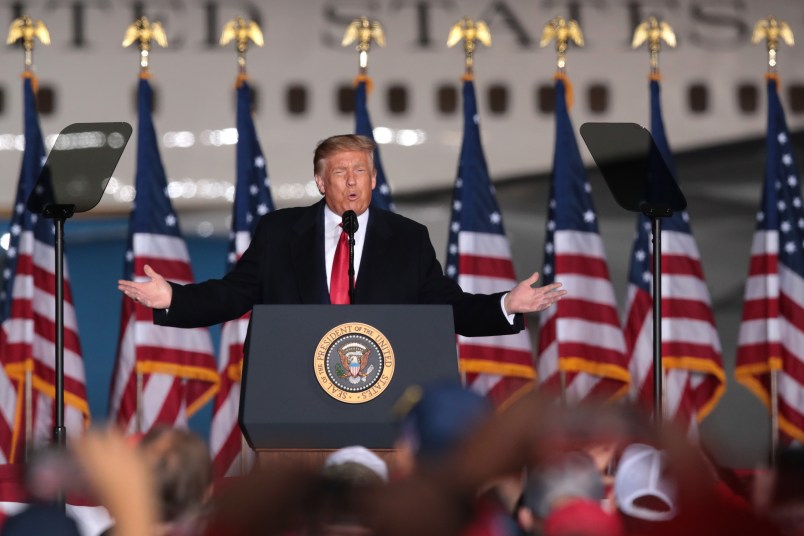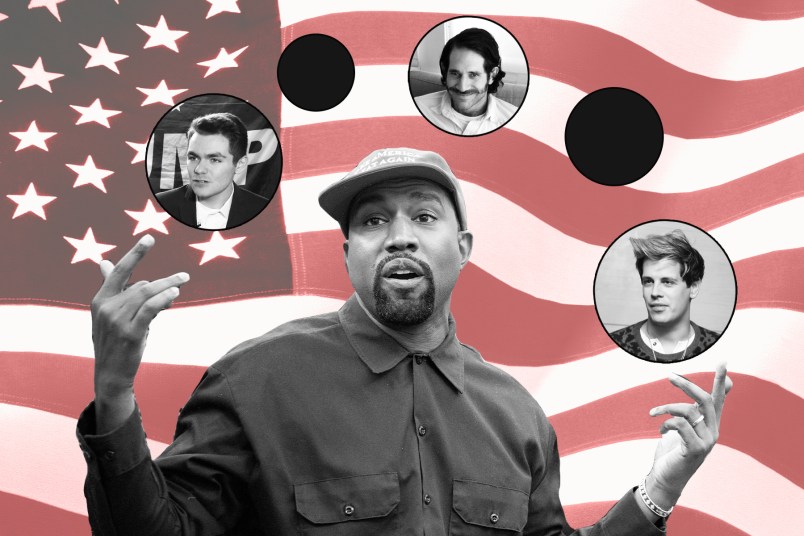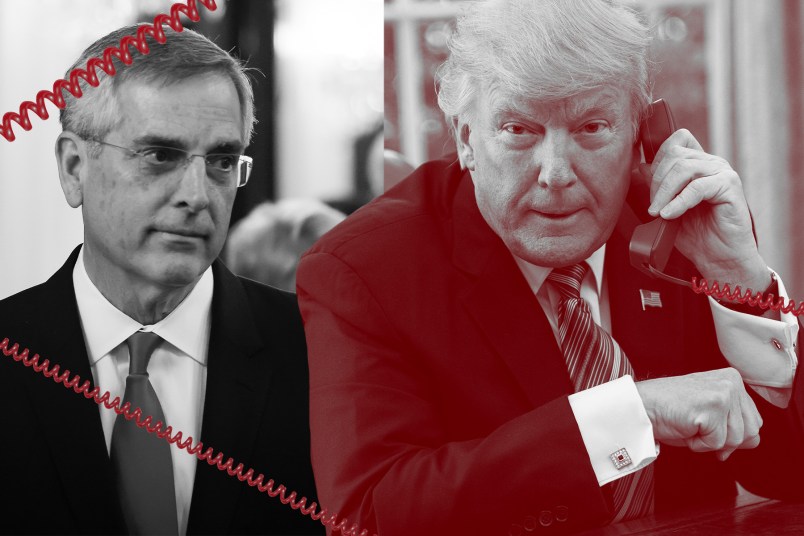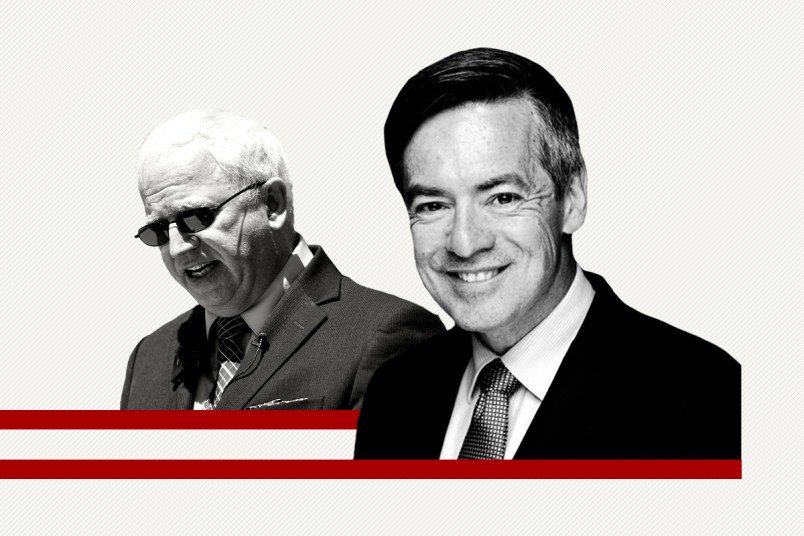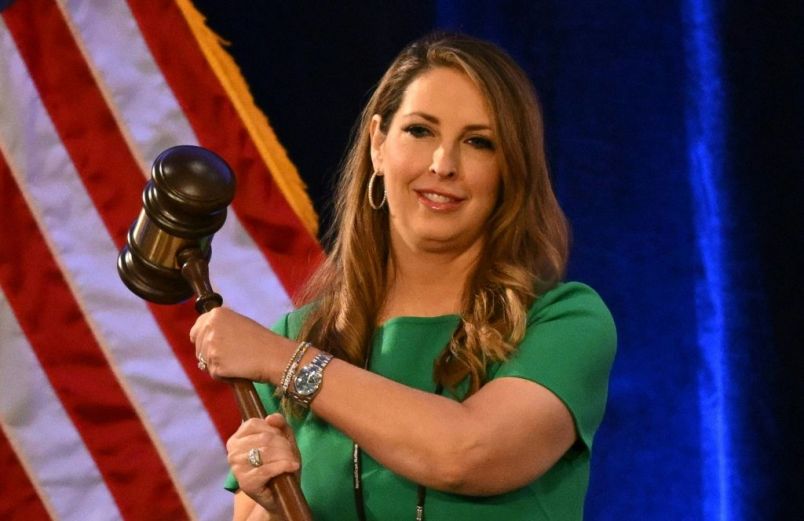For years, political operatives have been waging war over Wisconsin: Republicans scrambling to keep the upper hand in a key state that secured Trump’s 2016 victory, and Democrats trying to bring the one-time progressive powerhouse back into the fold.
But now, the pandemic that has killed 210,000 Americans and come to define the final year of Trump’s first term is flooding hospitals in the state’s reddest regions and killing scores of Wisconsinites.
Before getting sick himself, President Trump was set to visit Green Bay and La Crosse, both of which were battling a sudden surge in COVID-19 hospitalizations.
The President’s associates dismissed concerns about the spread as a bid to restrict his freedom and that of Wisconsinites as several hospitals in the area began to fill up.
“The President believes that people have a First Amendment right to political speech; he is having a rally, people can choose whether or not to come,” said White House Press Secretary Kayleigh McEnany on Oct. 1.
That same day, Trump himself tested positive for the coronavirus, forcing him to cancel the trip. But the virus has continued to spread in the area, with Governor Tony Evers (D) ordering a field hospital to be built to manage patient overflow.
The story is an ironic one that would seem overwritten were it not reality: the COVID-19 catastrophe that Trump has made a point of playing down is now overflowing hospitals and killing the citizens of a state that, pollsters say, President Trump absolutely needs to win to secure his re-election.
To Paul Casey, emergency department director at Green Bay’s Bellin hospital, the outbreak is partly a reflection of misinformation around basic COVID-19 safety measures.
“There’s a very strong feeling in the more rural, conservative areas that this is still all a hoax, that these measures violate our constitutional rights,” Casey told TPM, adding that rural hospitals in the region had begun transferring patients to the already-stricken Green Bay.
Casey painted a now-familiar but dramatic picture of the outbreak, with rural hospitals nearing capacity and patients being treated in hallways due to those infected with COVID-19 filling up the wards. COVID-19 hospitalizations have tripled in Wisconsin over the past month.
“If this is not a crisis, I don’t know what a crisis looks like,” said Dr. Imran Andrabi, CEO of ThedaCare, a regional hospital system.
Wisconsin went for Trump in 2016 by a margin of around 22,000 votes, or 0.77 percent of all votes case.
Of the so-called “blue wall” of upper midwestern states that President Obama secured but which went to Trump in 2016 — including Wisconsin, Michigan, and Pennsylvania — Wisconsin has been seen as the most contentious. But polls suggest the state is vulnerable for Republicans and likely to return to Democrats.
The state’s northern portion, polling and electoral history suggest, leans further to the right. The region’s officials have been reluctant to enforce social distancing and mask-wearing measures, with some local sheriffs stating that they would refuse to enforce the mandate set by Governor Evers.
Casey attributed some of the spread in Northern Wisconsin to regional county fairs held over the past month.
One fair in particular, held in Shawano county just to the north of Green Bay, preceded a situation at the local hospital in the county that, Casey said, is now 85 percent full of COVID-19 patients.
He added that the head of that local hospital had begun asking to transfer patients out, sending a message to doctors that read “please start transferring patients to Green Bay.”
“Those of us working on the front lines see a clear connection between these public events and all of these cases,” Casey added.
In La Crosse, where President Trump had been scheduled to hold a rally before cancelling it due to his own infection, students at the local university and Oktoberfest revelers are suspected of helping spread the virus, a local health official said.
Sen. Ron Johnson (R-WI) himself attended an Oktoberfest fundraiser last Friday while awaiting the results of his own coronavirus test, which came back positive.
“I’m not sick. I have no symptoms,” Johnson told local media. “I certainly did not anticipate testing positive.”
This story has been updated.


